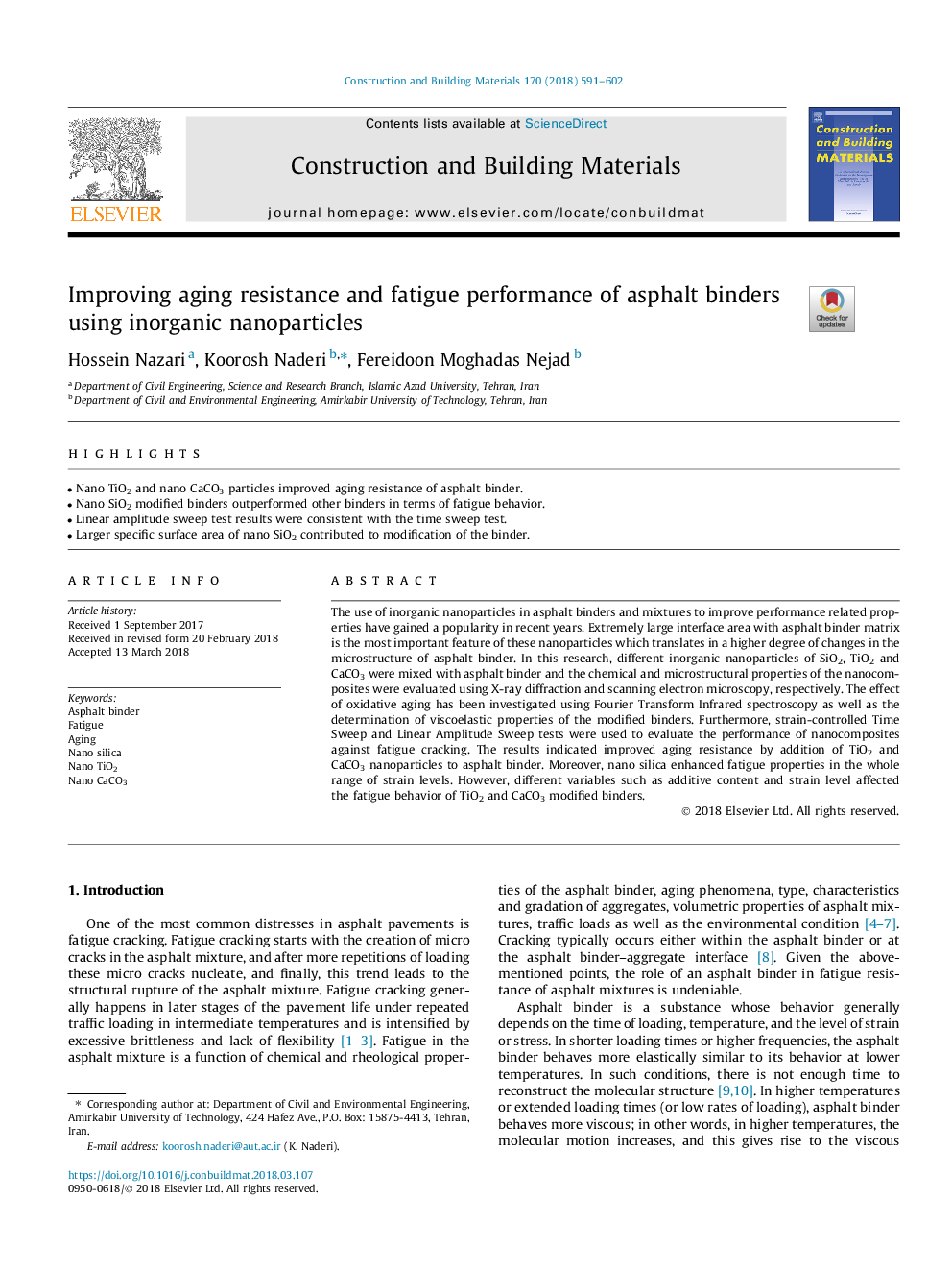| Article ID | Journal | Published Year | Pages | File Type |
|---|---|---|---|---|
| 6714249 | Construction and Building Materials | 2018 | 12 Pages |
Abstract
The use of inorganic nanoparticles in asphalt binders and mixtures to improve performance related properties have gained a popularity in recent years. Extremely large interface area with asphalt binder matrix is the most important feature of these nanoparticles which translates in a higher degree of changes in the microstructure of asphalt binder. In this research, different inorganic nanoparticles of SiO2, TiO2 and CaCO3 were mixed with asphalt binder and the chemical and microstructural properties of the nanocomposites were evaluated using X-ray diffraction and scanning electron microscopy, respectively. The effect of oxidative aging has been investigated using Fourier Transform Infrared spectroscopy as well as the determination of viscoelastic properties of the modified binders. Furthermore, strain-controlled Time Sweep and Linear Amplitude Sweep tests were used to evaluate the performance of nanocomposites against fatigue cracking. The results indicated improved aging resistance by addition of TiO2 and CaCO3 nanoparticles to asphalt binder. Moreover, nano silica enhanced fatigue properties in the whole range of strain levels. However, different variables such as additive content and strain level affected the fatigue behavior of TiO2 and CaCO3 modified binders.
Related Topics
Physical Sciences and Engineering
Engineering
Civil and Structural Engineering
Authors
Hossein Nazari, Koorosh Naderi, Fereidoon Moghadas Nejad,
